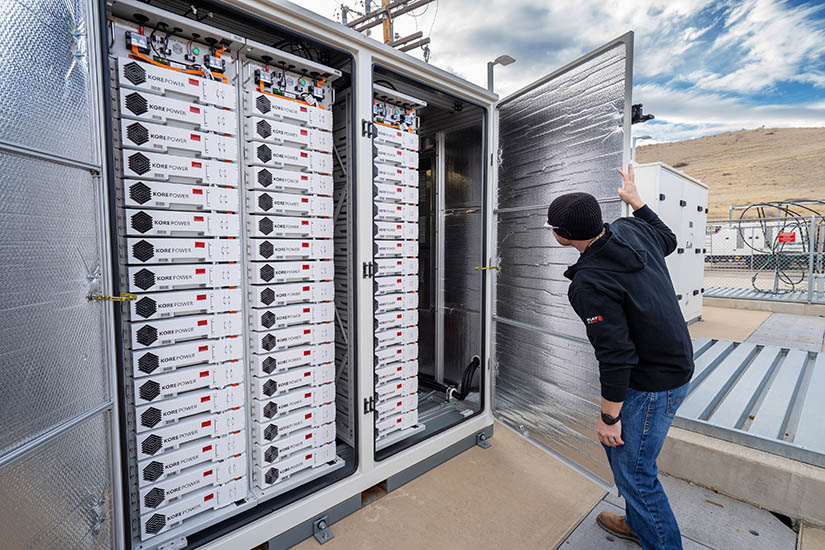NREL Researchers Reveal Concept To Curb Need for Battery Storage

A delicate balancing act between the generation of renewable energy and the demand for that power could reduce the need for as much short-duration storage, according to a new proof-of-concept paper authored by researchers at the U.S. Department of Energy’s National Renewable Energy Laboratory (NREL).
The paper, “Shifting Demand: Reduction in Necessary Storage Capacity Through Tracking of Renewable Energy Generation,” outlines how this balance could be accomplished by using advanced controls. Published in the journal Advances in Applied Energy, the research introduces the novel forecast-aided predictive control (FAPC) algorithm, which would autonomously control both charging stations for electric vehicles and the HVAC systems in buildings and has the ability to scale to thousands of assets.
Wind and solar, the most common sources of renewable energy, are unpredictable in nature and can introduce uncertainty to the electrical grid because peak demand can occur at different times than peak generation. Demand also has a level of unpredictability, making this problem especially challenging. The researchers pointed out that one way to mitigate the problem is to use storage to account for this mismatch. While storage can help increase the grid’s ability to accommodate renewables, utility-scale batteries are still relatively expensive. In a system dependent on these intermittent energy resources, more closely matching supply and demand could be part of the answer.
“This work is showing us you don’t always need a such a big battery. You likely still need a smaller battery,” said Jennifer King, a research engineer at NREL and co-author of the paper. Instead, coordinated communication between devices—such as one controlling EV charging outside an office building, where the HVAC system is under control by another—can match the demand for power generated by renewable sources. “That’s a huge implication because we may run into supply chain issues with batteries needed for the grid or for EV charging. We need a different solution.”
The FAPC algorithm work builds upon research published last year that showed EV charging and buildings can work together to provide services to the grid. The improved algorithm takes the work a step further by including forecasts to improve its real-time tracking ability. How much wind and solar power will be generated is considered, as is the temperature and time of day and week. All that coordinated information allows the algorithm to estimate the energy demand for the building and charging station.
“We have an idea of how many people will be in the building, and then from there we can get an estimate of how many electric vehicles will be arriving at the charging station,” said Dylan Wald, lead author of the new journal article and last year’s paper. Wald, a graduate intern at NREL, is a Ph.D. student in electrical engineering at Colorado School of Mines. “Everything is intertwined, and we can leverage this interconnectedness.”
Other co-authors, all from NREL, are Kathryn Johnson, Joshua Comden, Christopher Bay, Rohit Chintala, Sanjana Vijayshankar, and Deepthi Vaidhynathan.
The building controls regulate the temperature inside to make its inhabitants comfortable. The controls for the EV station can stagger when the vehicles are charged.
“There's a lot of flexibility in the grid that we can exploit,” King said. “I don't need my car charged right at 9 a.m. when I get to work. I can have it charged later during the day, so we should be taking advantage of those levers to work with the existing infrastructure that we do have.”
Future work with the algorithm involves scaling the system to include multiple buildings and charging stations, each with different sizes and dynamics. That would allow the researchers to simulate and emulate a more realistic scenario, providing a detailed cost savings analysis that could eventually lead to real-world deployment of the FAPC algorithm.
“A lot of studies on deep decarbonization rely heavily on storage,” King said. “We believe that this is a step in the right direction to be able to include the demand response in that level of analysis as well.”
Last Updated May 28, 2025
